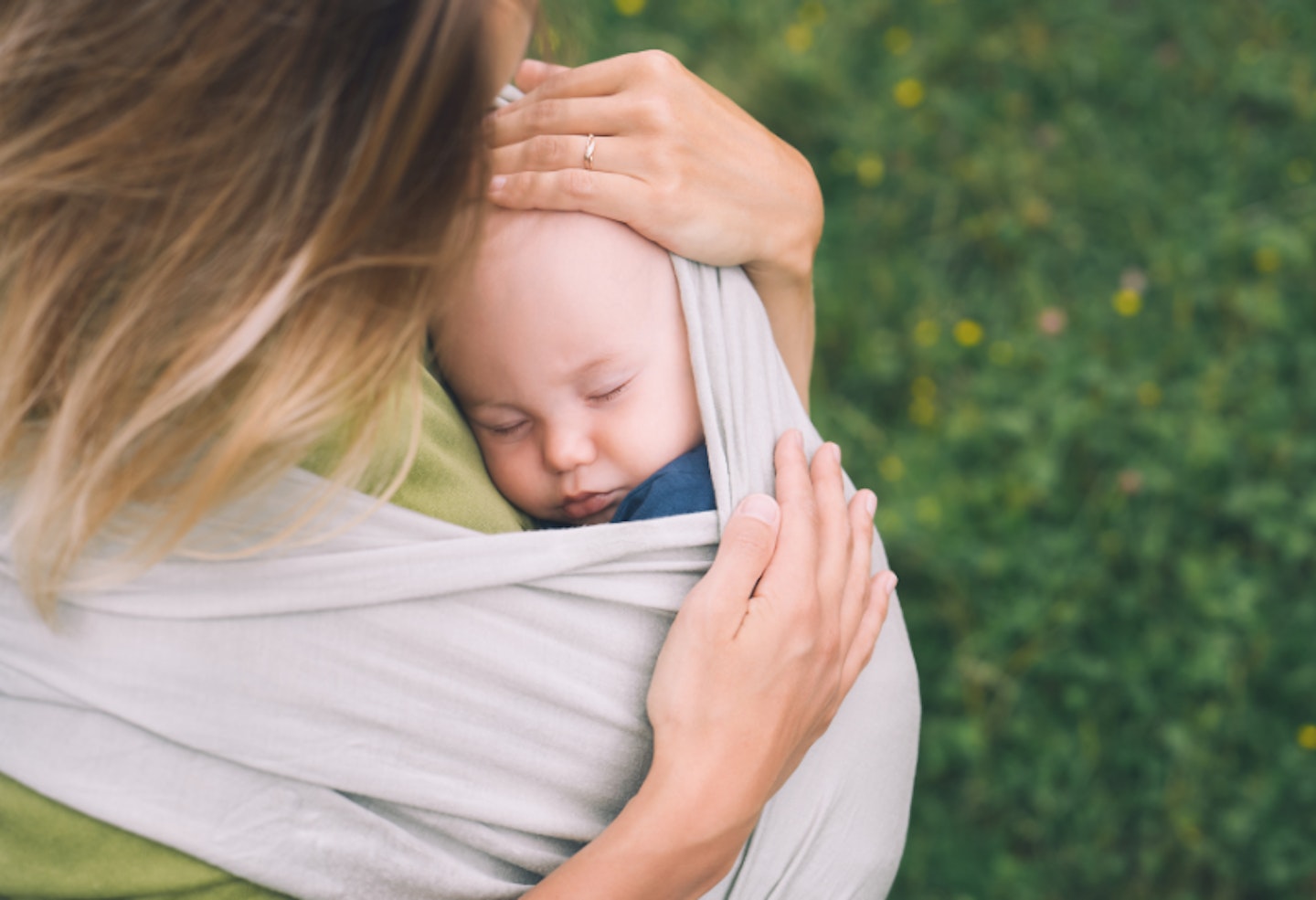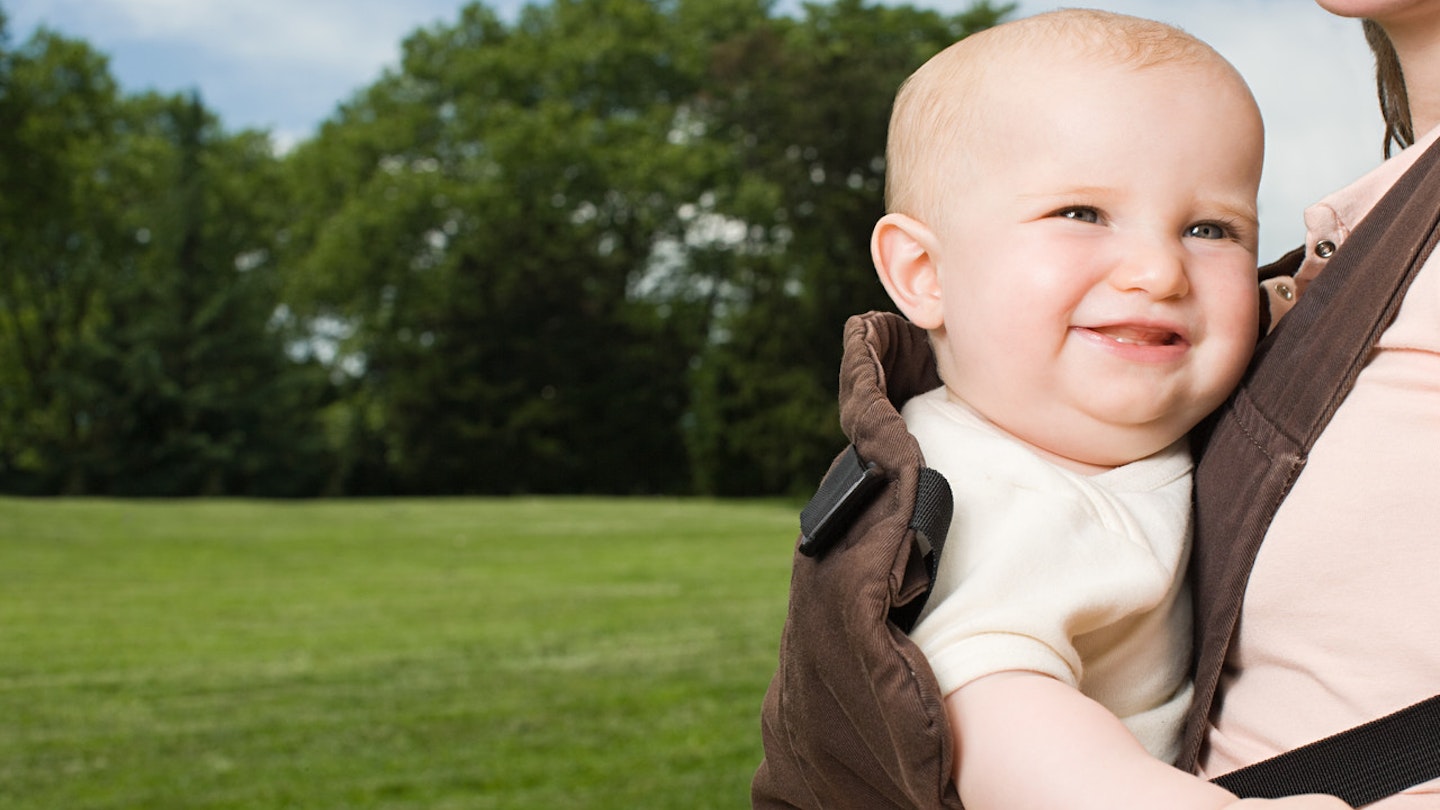Slings and baby carriers let you keep your little one close to you, but then still leave your hands free for other activities – making baby carriers a practical purchase. We’ve spied everyone from Gwyneth Paltrow to Nicole Kidman out and about with them in the past. But they’ve got to be used properly. Here, we round up the dos and don’ts when it comes to babywearing with a sling or carrier.
Do make sure your baby is positioned correctly
Find out how to position your baby safely by reading the T.I.C.K.S guidelines created by the British Association of Babywearing Instructors:
T is for tight. Your baby should be close enough to hug close to you.
I is for in view at all times. You should always be able to see your baby's face by glancing down.
C is for close enough to kiss. Your baby's head should be as close to your head as is comfortable.
K is for keep chin off the chest. A baby should never be curled so their chin is forced onto their chest because this can restrict their breathing.
S is for supported back. A baby should be held close to support their back and stop it slumping.
‘Your baby should be in a position where he is close enough to kiss by tipping your head forward, and he should never be curled so his chin is pressed on to his chest as this can restrict breathing,’ explains senior policy adviser for NCT, Rosie Dodds.

Don’t use loose fabric
While you might think that loose fabric on a sling would be comfortable for your baby, it can ‘allow your baby to slump down which can hinder his breathing,’ says Rosie. Instead, make sure you can always see your baby’s face when you glance down but that the sling is tight enough to hug him close.
Do check the weight guidelines
Double check the weight guidelines on the sling you’re buying when you look for one, as it’s not a case of one size fits all. Then adjust it every time you wear it, especially if other people are wearing the baby carrier or sling too.
Don’t zip up your coat over your baby
Even when it’s cold out, refrain from zipping up your coat to cover your baby as it can put him at risk of suffocating. Providing he’s wearing enough clothing, he’ll be cosy enough – and your own body heat will keep him warm. You can purchase baby carrier covers too, which ensure comfort, protection and safety. Alternatively, a baby wearing coat will keep you both warm and snug.
Do wear your baby high up
Generally the higher up on the body your baby is, the easier the sling will be on your back. Similarly, as the NHS advises, the closer he or she is to your body, the better it is for you and baby.

Don’t forget your little one’s head
A newborn baby’s head always needs support. Whether you’re carrying or wearing your baby in a sling, make sure to support the head and keep an eye on it.
Don’t let your baby slump either. While he will naturally gravitate towards a slight C shape in a sling, try and keep his spine straight. ‘Carrying him upright with his hips and legs in the ‘M’ position is likely to be safest and is most suitable for his developing hips and spine,’ Rosie explains.
Do make sure they are wearing the right kind of clothes
Is he too hot? Think about the sort of clothes your baby is wearing as the weather gets warmer. You wouldn’t like being stuffed up and swaddled inside excess fabrics either. Generally go for one more layer than you’re wearing to make sure they are at the right temperature.
Don’t let your baby’s legs dangle
Your baby could be at risk of developing hip dysplasia if their legs dangle. Instead, they should be in a frog stance where their bottom and hamstrings are supported by the sling.
Do get on the move
It’s a well-known fact that babies much prefer being on the move when inside their slings to being stood still. Something that’s good for you and your baby? Where do we sign?
Find the right one for you
If your baby is resisting the one you’ve bought, try another one. There are plenty of options and it might be you’ve just not found the right one. As your little one grows they might prefer a baby carrier backpackwhich are great for outdoor adventures, but only suitable for babies from six months. Another option for older babies and toddlers is a hip carrier, which are great for around the house and help to protect your back.
A journalist since 2015, Emily Gilbert is the Features & Reviews Editor for Mother&Baby and has written for the website and previously the magazine for seven years. First-time mum to Theodore, Emily writes about everything from the top baby products to pregnancy, fertility and maternal mental health. Specialising in product reviews, Emily is the first to know about all the exciting new releases in the parenting industry.
